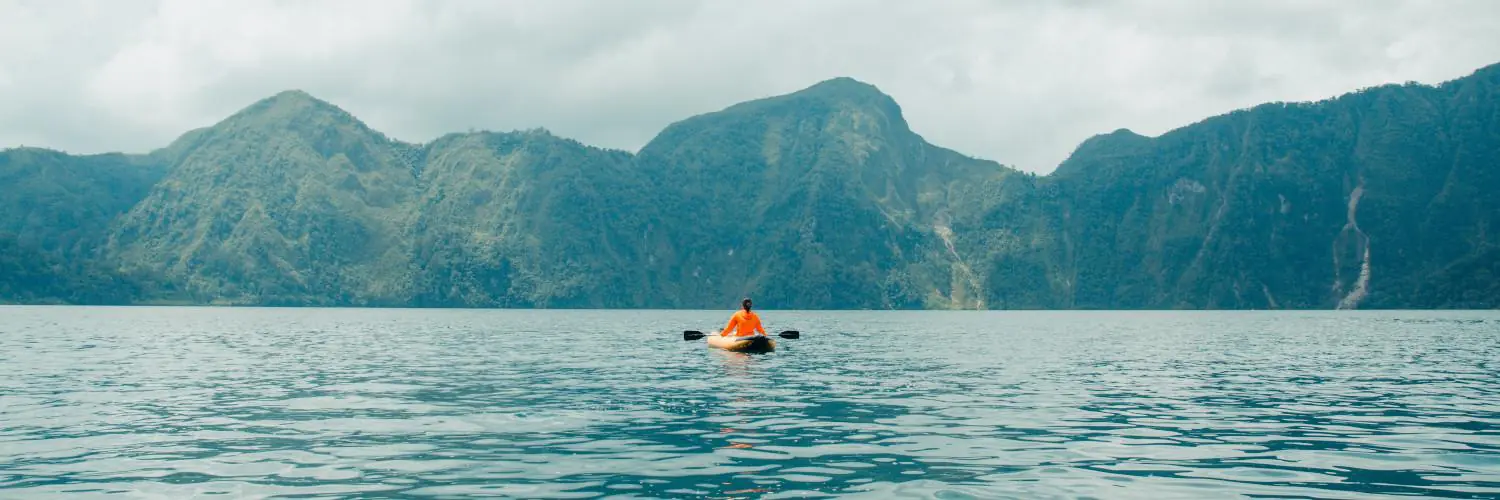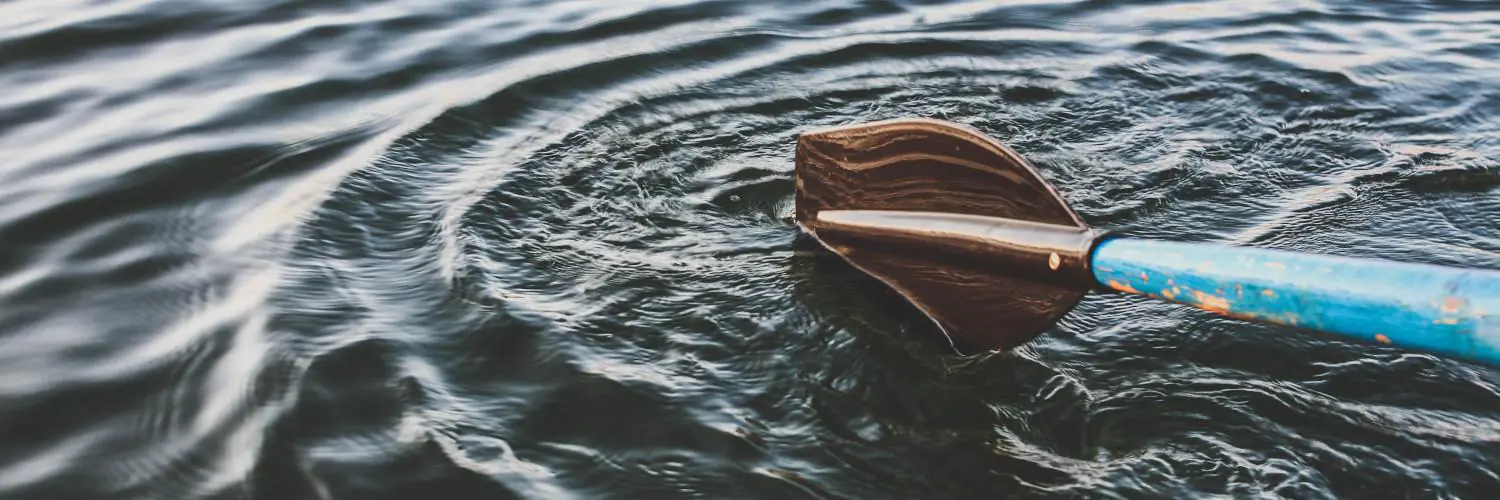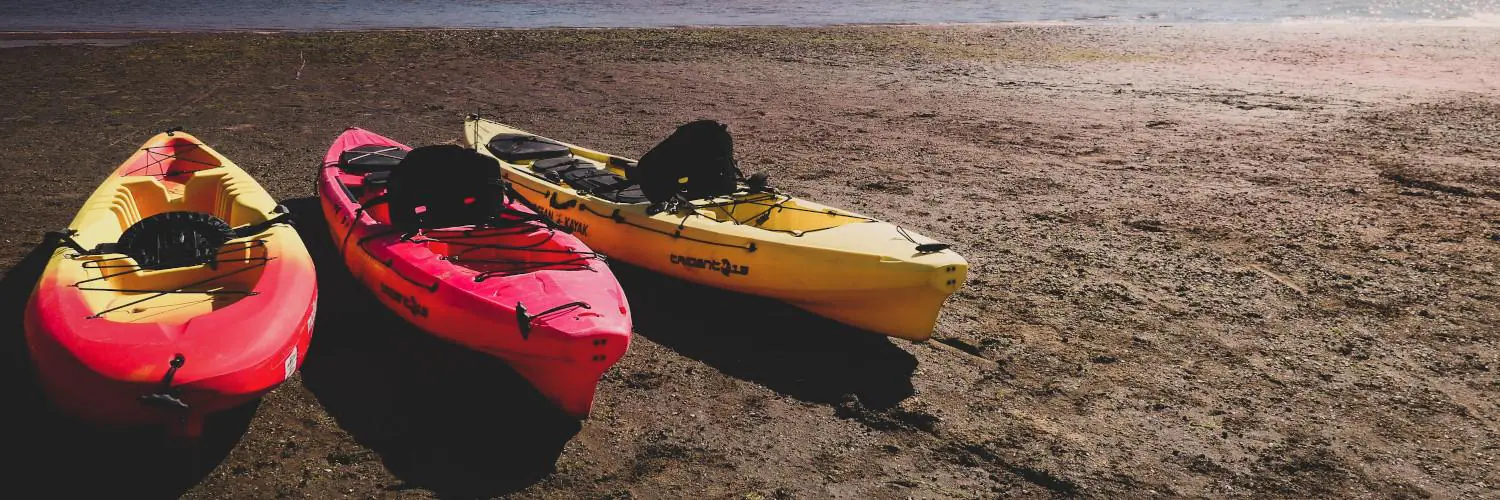A kayak anchor trolley system is an essential accessory for anglers and kayakers seeking control and stability when anchoring in various water conditions. This versatile rigging solution allows the kayak’s anchor point to be adjusted along the length of the vessel, providing the flexibility to change the anchor position from bow to stern with ease. The adjustability offers the kayaker the ability to respond to changing currents, wind, and water depth, ensuring more precise positioning and improved safety.
In the world of kayak fishing, the capability to remain stationary in the desired spot can make a significant difference. The anchor trolley system achieves this by facilitating the seamless deployment and retrieval of the anchor, enhancing the angler’s ability to stay over a prime fishing area without drifting. It also minimizes the potential of capsizing by allowing the kayak to align with prevailing environmental forces, rather than resist them. Overall, whether navigating rivers for angling or seeking a stable position on open waters, the anchor trolley system proves to be an invaluable component of modern kayaking gear.
Table of Contents
Understanding Kayak Anchor Trolleys
Kayak anchor trolleys provide a dynamic and efficient way to manage anchoring positions in a kayak, greatly enhancing stability and positioning while on the water.
Basics of Anchor Trolleys
An Anchor Trolley System on a kayak allows the user to adjust the position of the anchor line along the side of the vessel. This system typically involves a rope or cord (the trolley line) that runs from the front (bow) to the back (stern) of the kayak. Adjustments to the trolley enable the angler or paddler to change the kayak’s orientation relative to wind or current.
Benefits of Using a Trolley System
Using a trolley system offers several advantages:
- Positional Control: Easily adjust the kayak’s orientation without having to lift the anchor.
- Improved Stability: Maintain a desirable position in various weather conditions.
- Versatility: Suitable for anchoring in both shallow and deep waters.
Components of an Anchor Trolley
An effective Kayak Anchor Trolley comprises essential components:
- Trolley Line: A durable rope looped from bow to stern along one side of the kayak.
- Pulleys: At least two, attached at both ends of the kayak, allowing smooth movement of the line.
- Rings or Carabiners: Connect the anchor line to the trolley, offering a movable attachment point.
- Anchor Line: Attached to the ring or carabiner, it runs down into the water to the anchor.
To ensure proper function and longevity, high-quality materials and correct installation of these components are crucial.
Selecting the Right Kayak Anchor
When it comes to anchoring a kayak, the decision relies on understanding the different types of anchors, the specific water conditions they are best suited for, and the appropriate weight and size needed for your kayak’s stability.
Types of Anchors
Grapnel Anchors: Best for rocky bottoms or areas with heavy underwater structures. These anchors have multiple flukes that can grip terrain firmly. Mushroom Anchors: Ideal for mud or silt conditions, mushroom anchors rely on their shape to create suction for secure placement. Sand Anchors: These are designed with wide flukes to hold ground in sandy or silty environments, ensuring a strong hold due to a larger surface area.
Choosing an Anchor Based on Water Conditions
River currents or ocean tides demand anchors that can withstand dynamic forces. Grapnel anchors work well against strong currents by hooking onto rocks or other solid holds. For calm conditions with less movement, like in bays or lakes, mushroom anchors may provide sufficient holding power without the need for aggressive gripping.
Weight and Size Considerations
The anchor size is typically dictated by the length of the kayak:
- Under 10 feet: 1.5 to 3 lbs
- 10 to 15 feet: 3 to 5 lbs
- Over 15 feet: 5 to 7 lbs
These weights ensure manageability and efficiency without compromising on the kayak’s stability. The choice of anchor directly affects safety and ease of movement on water.
Setting Up Your Kayak Anchor Trolley
Setting up a kayak anchor trolley system is fundamental for maintaining stability and control in various water conditions. It allows an angler to adjust the anchor point from bow to stern smoothly, optimizing the kayak’s positioning against wind and current.
Installation Process
To properly install an anchor trolley system, one must start by determining the position on the kayak where the system will run. It typically goes along one side of the kayak from bow to stern. Begin by mounting the padhooks or trolley rings, which guide the trolley line, ensuring they’re properly spaced and aligned. Next, thread the trolley line, commonly a paracord, through the padhooks and attach it to the stainless steel pulleys at both ends of the kayak. Secure the trolley line with knots that are strong yet allow for adjustments.
Tools and Hardware Needed
The installation process requires specific tools and hardware. Prepare the following items before starting:
- Phillips screwdriver or drill with appropriate bits
- Stainless steel screws (usually provided with the trolley system kit)
- Padhooks or trolley rings
- Stainless steel pulleys
- Paracord or similar durable line
- YakGear, YakAttack, or similar trolley system kit
Mounting Tips for Optimal Performance
Proper mounting ensures the trolley system functions correctly and lasts longer. Use these tips for optimal performance:
- Position padhooks so that the paracord runs parallel to the kayak, avoiding any loose loops that could snag.
- Keep the line just tight enough to function but not so tight that it restricts movement of the pulleys.
- When mounting hardware, seal the entry points of the screws with marine-grade sealant to prevent water leakage into the hull.
- Check that all components are from reputable brands like YakGear or YakAttack to guarantee quality and durability.
Anchor Deployment and Retrieval Techniques
Effective anchor management on a kayak not only ensures stability during fishing but also enhances safety in changing conditions. This section outlines the methods for deploying and retrieving anchors, as well as implementing quick release tactics for emergency situations.
Deploying Your Anchor
When deploying an anchor, it is crucial to position a pulley system, known as an anchor trolley, along the kayak’s length. This setup allows the anchor line to move from the bow to the stern, providing the angler with directional control.
- Locate secure attachment points on the side of the kayak for the pulley system.
- Ensure the trolley can move smoothly without obstruction.
- Lower the anchor slowly to prevent sudden movements that might destabilize the kayak.
A controlled deployment reduces the chance of tangling and prepares the kayak for a stable fishing experience.
Retrieving and Storing Anchors
The retrieval process involves a careful winding of the anchor line to maintain balance and prevent capsizing. After use, proper stowage is essential to avoid clutter and accidents.
- Use a hand winch mounted near the seat to wind the anchor line.
- Guide the anchor smoothly into a storage area to prevent it from swinging freely.
- For systems like the Anchor Wizard, a plastic tube may be employed to help guide the anchor during both deployment and retrieval, reducing the chance of injury or damage to the kayak.
Quick Release Techniques for Safety
Quick release systems are valuable in situations where an immediate escape from the anchor is necessary, such as sudden changes in weather or water conditions.
- Have a quick release clip or mechanism installed on the anchor line.
- Know the location and operation of the quick release to act swiftly.
- Employ drift chutes or drift socks as alternative anchoring methods to manage movement in currents or wind without a fixed anchor point.
By understanding and applying these techniques, kayakers can maintain better control over their vessels and ensure a safer experience on the water.
Anchoring Strategies for Anglers
An effective anchoring strategy is critical for kayak anglers, allowing for stability and precise positioning in various water conditions to increase the likelihood of catching fish.
Positioning for Successful Fishing
Kayak anglers should have a keen understanding of their target fish species and water conditions. Positioning the kayak to maintain a steady location with the use of anchor trolley systems can be crucial. This system allows the angler to adjust the anchor point from bow to stern, providing optimal boat orientation in relation to current or wind and ensuring a more productive fishing experience.
- Bow Positioning: Ideal for stability against waves and wind.
- Stern Positioning: Recommended for maintaining position in changing currents.
Anchoring in Current and Wind
When dealing with current and wind, anglers must adapt their anchoring strategies to mitigate kayak movement which can disrupt fishing activities.
- Current: Use a heavier anchor to grip into tougher substrates like rocks and sand; consider a length of chain to aid in anchoring.
- Wind: A responsive anchor trolley system allows quick adjustments to align the kayak for wind direction changes, minimizing the spinning or drifting that can occur in windy conditions.
Using Drift Anchors and Drift Chutes
In scenarios where slow movement is beneficial, such as covering large fishing areas, anglers might opt for a drift anchor or drift chute.
- Drift Chute: Slows the kayak’s drift rate, offering controlled movement through shallow or deep water.
- Shallow Water: A stakeout pole can quickly anchor a kayak with minimal disruption.
Drift techniques are advantageous in both current and wind by providing a slow descent that helps cover more water, potentially leading to increased fish catches.
Maintaining and Upgrading Your Anchor Trolley System
To ensure longevity and optimal performance, kayak anglers must regularly maintain and consider upgrading their anchor trolley systems. This involves diligent cleaning to prevent corrosion, enhancing the system with high-quality components for better performance, and being well-versed in the replacement and repair of worn parts.
Regular Maintenance to Prevent Corrosion
Regular maintenance of an anchor trolley system is key to combat the corrosive effects of salt and freshwater environments. One should:
- Inspect: Regularly check all components for signs of wear or corrosion, especially metal parts like anchor cleats and pulleys.
- Clean: After each use, rinse the trolley system with fresh water to remove debris and salts that can accelerate corrosion.
- Lubricate: Apply marine-grade lubricant to moving parts to ensure smooth operation and prevent the onset of rust.
Upgrades for Enhanced Performance
To upgrade an anchor trolley system:
- Replace standard pulleys with YakAttack Stealth Pulleys. These are specifically designed for silent and smooth operation, improving overall performance.
- Consider the Anchor Wizard, an aftermarket upgrade that allows for easy adjustment and retrieval of the anchor line.
Upgrade materials used in the trolley line, opting for UV-resistant and water-resistant ropes to increase durability.
Replacement and Repair Tips
Effectively addressing wear and tear requires:
- Carry spare parts such as extra ropes and pulleys for quick replacements.
- Learn how to tie proper knots for securing replacement parts to maintain system integrity.
- If an anchor cleat is damaged, replace it immediately to ensure that the anchor line can be reliably secured.
By following these specific practices, one can significantly extend the life of an anchor trolley system and enhance its utility during kayak fishing excursions.
Accessorizing Your Kayak for Anchoring
Properly outfitting a kayak for anchoring involves selecting key accessories and customization options to match the unique demands of kayak anchoring in both still and moving waters.
Essential Accessories for Anchoring
When anchoring a kayak, some accessories are considered essential for safety, stability, and effectiveness. A well-considered anchoring system typically includes:
- Stakeout Poles: These are slender, long poles that can be driven into the bottom sediment to keep the kayak stationary in shallow waters.
- Buoy: Used in conjunction with an anchor, a buoy can mark the location of your anchor and make retrieval easier.
- Drag Chain: A length of chain that drags along the bottom, used to slow down the kayak rather than bring it to a complete stop.
- Anchor Trolley System: This pulley and rope system allows the angler to adjust the anchor line position from bow to stern, aiding in directional stability and wind or current adjustments.
A typical Kayak Anchor System might include:
| Item | Description | Use Case |
|---|---|---|
| Anchor Trolley System | Allows the anchor position to be adjusted. | Maintaining a position in current or wind. |
| Stakeout Pole | A long, thin pole for anchoring in shallow water. | Staying stationary in flats, marshes, or areas with soft bottoms. |
| Drag Chain | Chain that creates drag to slow kayak movement. | Drifting slowly in rivers or estuaries with controlled speed. |
| Buoy | Floatation device marking anchor location. | Locating and retrieving anchors in deeper water. |
| Anchor | Weight used to secure the kayak in place. | Anchoring in deep water or strong current conditions. |
Customization Options for Individual Needs
Anglers and kayakers may decide to enhance their anchoring systems based on individual needs and the conditions they frequently encounter. Some customization options include:
- Powered Anchoring Systems, like the Power-Pole Micro, offer a quick and effortless way to anchor in shallow water with the press of a button.
- Adjustable mounts and brackets allow for precision placement and orientation of anchors and poles.
- Adding a quick-release mechanism to the anchor trolley system can provide an added safety feature, allowing for rapid disconnection in case of an emergency.
Each of these accessories serves a specific purpose and can be selected based on the environment, type of fishing, and personal preferences of the kayaker. Customization options help tailor the anchoring system to provide optimum performance and convenience.
Safety Precautions and Best Practices
When kayaking, understanding how to anchor securely and manage your anchor effectively is crucial for safety and stability. Proper techniques can prevent capsizing and ensure that a kayaker’s experience is not compromised by strong currents or adverse weather conditions.
Anchoring Safely to Prevent Capsizing
Capsizing is a significant risk if a kayak is anchored improperly, especially in strong currents or weather conditions that can shift a kayak’s position suddenly. To mitigate this risk, follow these precautions:
- Select the Right Anchor: Use an anchor with enough prongs to grip the bottom surfaces but not so heavy as to risk tipping the kayak.
- Adequate Rope Length: Have a rope that is at least seven times the depth of the water to allow for proper scope and angle, reducing the chances of the kayak being pulled down by the anchor.
- Correct Positioning: Anchors should be attached from the bow or stern, not the side, as this can cause the kayak to flip in changing conditions.
- Monitor Conditions: Always be aware of the weather and water conditions. Be prepared to release the anchor if conditions deteriorate.
Best Practices for Anchor Management
Effective anchor management encompasses proper installation, use, and maintenance of the kayak anchor system, contributing to the stability and safety of the kayak. Here are some best practices:
- Regular Maintenance: Routinely check and clean the anchor system to prevent malfunctions and rust.
- Anchor Trolley System: Utilize an anchor trolley system to allow for quick adjustments to the anchor line position on the kayak, accommodating changes in current and wind.
- Emergency Quick Release: Have a quick-release mechanism in case the anchor gets stuck or if you need to detach from the anchor quickly in an emergency.
By heeding these safety precautions and best practices, kayakers can enjoy a stable and secure anchoring experience.
Resources and Learning More
When seeking to master the kayak anchor trolley system, valuable resources like online tutorials and reputable vendors play a pivotal role. They offer insight into the usage and installation of these systems, often with visual aids or specific products that ensure proper compatibility and performance.
Online Tutorials and Guides
For those who prefer step-by-step visuals, video tutorials serve as an excellent resource for both novices and seasoned kayakers. Platforms like YouTube have an extensive library of tutorials covering “How to Use an Anchor Trolley“. Look for tutorials from trusted brands or experienced kayakers, ensuring you receive accurate and practical advice.
- YakAttack and YakGear: They often provide detailed guides and videos demonstrating their products and how to install or use them.
- Buoy Ball Technique: Some tutorials may showcase the innovative ‘Buoy Ball’ method which simplifies the anchoring process.
Recommended Brands and Vendors
The market is filled with various brands promising quality and reliability; however, YakAttack, YakGear, and H2o stand out for their specialized anchor trolley systems. These brands offer products that emphasize compatibility with a wide range of kayak models.
Amazon is a prevalent marketplace where one can find these brands’ products:
- YakAttack: Known for its durable and easy-to-use trolley systems.
- YakGear: Offers a variety of anchor trolley kits that cater to different kayaking needs.
- H2o: Provides cost-effective options without compromising on quality.
Products from these vendors often come with customer reviews, which are instrumental in assessing the product’s real-world performance.








